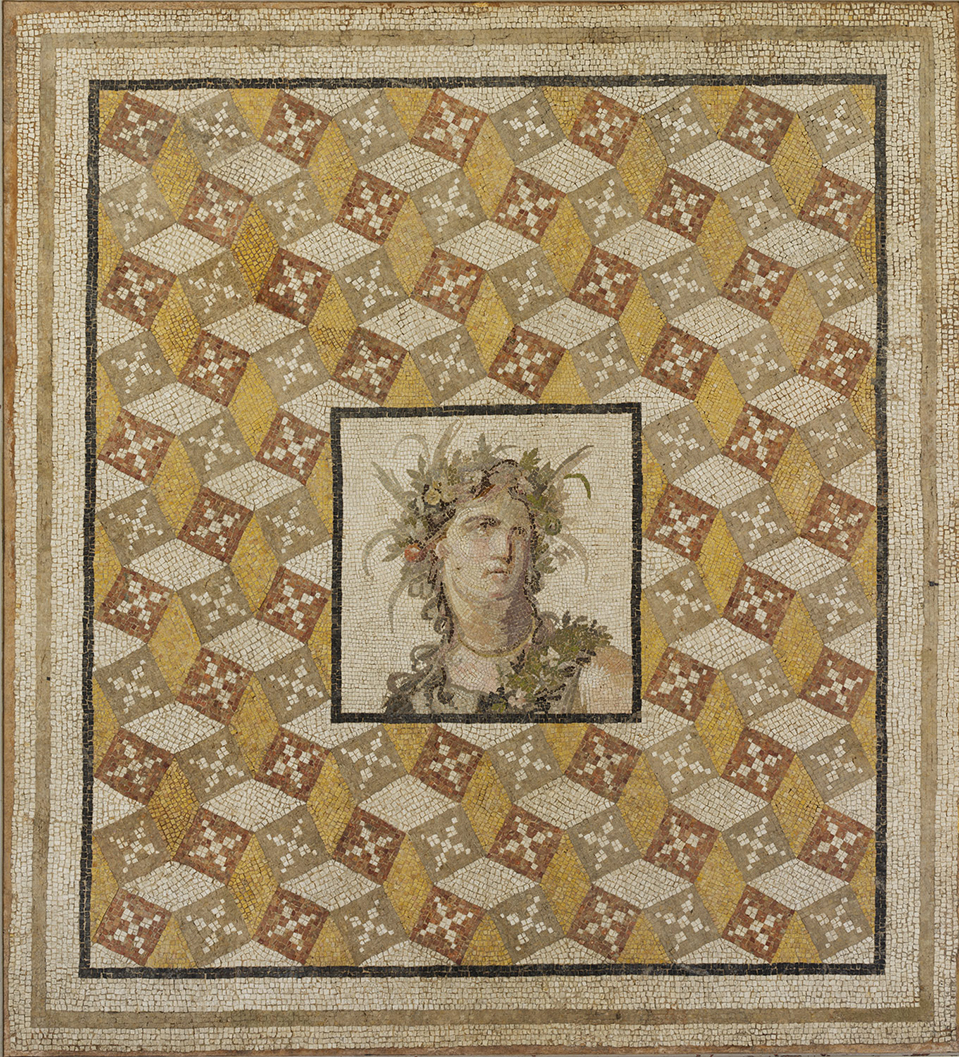Roman mosaic floor panel, 2nd century A.D.

This rectangular panel, representing the entire decorated area of a floor, was found in 1937 in part of a Roman villa excavated at Daphne, a summer resort near the ancient city of Antioch (in southern Turkey). The central emblem contains the bust of a female figure, probably a generic personification of abundance and good living. The figure wears a garland of flowers around her head and another over her left shoulder. Surrounding the emblem is a geometric pattern of squares and lozenges set at various angles to give the impression of three-dimensional cubes. Antonine mosaics depart from the Hadrianic preference for small, fine tesserae; instead, they employ larger tesserae that result in fewer gradations and more expressionistic forms.
